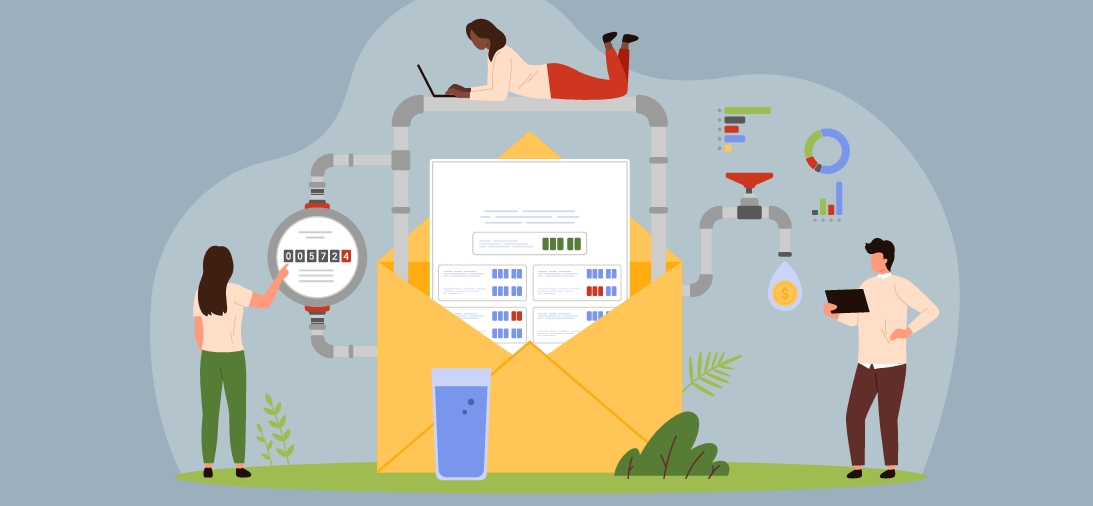How weather forecasting insights support water industry operations
Discover how the Met Office is helping the water sector by extending the reach of weather impact forecasting through innovative sub-seasonal prediction tools.
The water sector is increasingly facing the dual pressures of growing demand and the escalating frequency of extreme weather events driven by climate change.
The Industry Science and Consultancy team is combining its expertise to empower water companies to proactively prepare for weather-related challenges, ultimately bolstering the water sector’s operational resilience and ensuring a more reliable service delivery for their customers.
Read on to learn how collaboration with OfWat and Thames Water are paving the way for these advanced forecasting capabilities to provide trusted insights for the entire water industry.
Read the full case study below or download our case study as PDF here.
For more information, contact us at [email protected].
Case study: Sub-seasonal forecasting to improve operational decision-making in the water sector
Overview
Water sector operations are strongly influenced by the weather, particularly extreme weather events which are occurring more frequently due to climate change. Demand for clean water from households is closely linked to temperature and rainfall, with usage expected to be higher on hotter, drier days. At wastewater treatment works, storms and high rainfall can lead to an increased volume of incidents which require a response from staff.
An advanced warning of effects relating to weather would allow water companies to prepare for impactful weather events ahead of time, aiding in their operational decision making. The Industry Science and Consultancy team at the Met Office has been generating impact-based forecasts for a number of years – the most established work in this space is with the water demand model, which uses short-range weather forecast information to forecast customer water demand for a few days ahead.
Beyond a few days ahead, the chaotic nature of the atmosphere means that it becomes more difficult to maintain a similar level of local accuracy to that seen in short-term forecasts. It is possible, however, to accurately forecast trends around precipitation or temperature for these periods. Even further ahead, beyond 10 days, forecasts stretch into sub-seasonal outlooks where the uncertainty increases further. On these timescales, Decider (a Met Office probabilistic forecasting tool) can be used to give an indication of large-scale atmospheric circulation changes that could lead to a change in weather and associated impacts that are typical of that weather type.
Working in partnership with Thames Water and a number of other UK water companies on an Ofwat innovation funded project, we are combining the impact-based approach with sub-seasonal forecasting tools to extend this forecasting capability to the medium- to long-range, for not only water demand but also the forecasting of wastewater treatment work alarms.

How we help
The weather impact forecasting system provides two different services, both of which predict impacts on the water sector from five days to four weeks ahead. There is a forecast for impacts on clean water demand, which could be caused by high household usage on hot and dry days or increased leakage due to freeze-thaw processes on pipes. There is a separate forecast for impacts on wastewater treatment works, associated with high rainfall events.
Both products provide a forecast of the likelihood of the impact (certain thresholds of high demand or treatment work alarms) occurring each day between 5-28 days of the forecast being issued. The forecasts also provide the normal likelihood of the impact occurring for that time of year – this enables water companies to compare the forecast risk to the normal risk, contextualising periods of elevated risk.
The Met Office creates impact-based forecasts by using statistical modelling to understand the link between weather and its impact on the customer. The new forecasting system combines this impact-based approach with the Decider tool developed by the Met Office. This calculates the likelihood of seeing impacts for a given weather pattern, whether that’s notably high water demand, or a high number of wastewater alarms. This information is combined with the forecast likelihood of each weather pattern to generate an extended range impact forecast.
The project is currently in the trial phase where we provide a trial forecast service for the project partners, providing them with twice-weekly sub seasonal forecasts of the probability of high water demand and high wastewater alarms. The Met Office will be working closely with Thames Water and other partners on the Ofwat innovation project to make continual improvements, both to the underpinning science, but also the presentation and communication of the forecast service.
Our impact
The new forecast systems are improving water companies’ understanding of how the weather impacts their water and wastewater management. These tools are improving their resourcing and operational management capabilities for areas at risk from severe weather events, for example regions which are prone to surface water flooding. Advanced warnings of effects relating to weather allows water companies to prepare for impactful weather events ahead of time, aiding in their operational decision making. This could include cancelling non-essential planned maintenance to ensure all the infrastructure is available, or changing rotas to ensure that there are enough call centre staff and engineers available to deal with any incidents.
Thames Water have already been using a prototype of the sub-seasonal demand forecasting system. The tool is used in two ways; firstly, in supporting the weekly preparation of a Production Plan for the next six weeks, with the plan clearly communicating the level of output required from each treatment plant. Secondly, it aids the risk assessment of planned maintenance activities, which enables the early warning of possible postponement of work due to high demand levels, which could avoid late cancellation costs. The service is also used to identify windows of low demand risk, enabling maintenance activities to be carried out during periods that are deemed lower risk.
For Thames Water, the sub seasonal forecast is not seen as a standalone product, more as an early warning system which supports escalation where necessary. The value of the service is twofold; firstly, in being able to mitigate against customer supply issues by being able to react to potential changes in demand levels in a timely manner. Secondly, it helps avoid expensive cancellation costs due to late cancellation of planned work.
Testimonial
“More and more we’re seeing the devastating impact of extreme weather events across the country. To help the water industry meet new challenges caused by climate change, it is vital we have the tools to better forecast weather patterns and adapt our infrastructure and resources for the benefit of our customers.
The Ofwat Innovation funded project, ‘The use of Sub Seasonal forecasting to Improve Operational Decision Making’, led by the Met Office and Thames Water has progressed on plan and within budget. Having successfully transitioned from Phase 2 (Model Development and Implementation) in to Phase 3 (Fine tuning and further development) with the eight Water Demand and three Wastewater partners receiving twice weekly forecast reports. The aim of these reports is primarily, to alert the partners of potential increase in Water Demand or increased risk of high alarm volumes in the case of the Wastewater service.” Ian Savage - Strategic Control Manager (London), Thames Water
To find out more visit the water sector services webpage or email [email protected].
Insights
The latest insights and information from our industry experts
View hub
Get in touch
Call us
We are available 24/7.
0370 900 0100Email us
Fill out this short form and we'll get back to you.
Contact Us formFollow us
Linkedin XGet in touch
Call us
We are available 24/7.
0370 900 0100Email us
Fill out this short form and we'll get back to you.
Contact Us form




